
It’s our hope that each of you, our readers, will enjoy and appreciate this article we present about these 4 Geological Wonders of Virginia. It was certainly our pleasure to gather the information for you. May it provide you with both education and increased awareness.
Certainly, these formations listed herein represent only a portion of the marvels found throughout this amazing region. It’s our belief, though, that they serve as excellent representations of the features found here. Check out some of our other articles, as well.
Luray Caverns
Luray Caverns Facts
- Leading off this article about these 4 Geological Wonders of Virginia we present the subterrnean marvel known as Luray Caverns.
- This spectacular, though lesser-known, marvel of geology most frequently goes by the deceptively simple name given here. It did possess a slightly different name in the past, though. This magnificent site originially bore the name of Luray Cave.
- Not surprisingly, local Native American populations long knew of the existence of this fabulous formation. There’s no evidence of regular use or visitation by them, though. Exactly how long ago they discovered it also continues to remain unknown.
- In modern times, however, the first known sighting of the caverns by non-native settlers occurred on August 13, 1878. At that time, five locals stumbled upon the natural wonder. Their attention had been drawn by an air current from a small sinkhole.
- Legal disputes over ownership of the property on which the system lies quickly came into play, however. That occured because the men who discovered the site did not disclose it to the then owners, because the land was due to be sold at auction.
- Following this realization, legal battles began. The courts eventually nullified the first purchase of the land. Later, the overall tract of land changed hands several times in the next few years. Eventually, the Luracy Caverns Company purchased the site in 1893.
- Its stunning visual scenery understandly quickly drew massive attention to what later became known as Luray Caverns. The government officially listed the location as a National Natural Landmark in 1974. As of 2018, about 500,000 people visit it per year.
Luray Caverns Physical Description
Luray Caverns represents a series of interconnected caverns. Each impresses the fortunate visitor with its abundance of wonders. Though it’s certainly not the most extensive such system known, it packs a real punch. Its physical description nevertheless bears mentioning.
The entrance from the surface begins as a path that angles downward. This quickly opens into the interconnected series of chambers of various dimensions. The smallest of these has a ceiling of about 30 ft (9 m). The highest, though, reaches an impressive 143 ft (90 m).
It’s not just about the pure size of the location, though. It’s also about the splendor to be observed there. This site boasts an extraordinary array of natural formations. For starters, it possesses a wide array of features such as stalactites, stalagmites, and mud flows.
This splendor’s also augmented by the presence of two bodies of water. These features bear the literary names of Dream Lake and the Silver Sea. The former remains the largest body of water present. Despite a naturally created illusion, it’s only around 20 in (50 cm) deep.
The most astonishing feature of the Luray Caverns, however, remains one named the Luray Singing Tower. That’s a remarkable assemblage of stalactites formed in close proximity. A total of 47 of them, in fact. This collection measures an incredible 117 ft (36 m) in height.
Colors of the various formations vary, of course. Surprisingly for many, though, white predominates. Incredibly, this memorable site packs all these wonders into a comparatively short length. That’s because the entirety of the structure only extends for 1.5 mi (2.4 km).
Luray Caverns Location, Formation, and Illusions
The Luray Caverns formed in a region of the world already well known for its abundance of natural beauty. That’s due to the fact that this natural wonder formed in what now constitutes the continent of North America. Even here, it stands out from similar features.
Within this larger area, it lies within the confines of the United States. There, it further sits on the eastern side of the continent. Natural processes additionally created it in the region now called the state of Virginia. It’s situated close to the far northern border of the state.
The precise date of formation for this marvelous site also presently remains undetermined. The closest geologists can come is that its origins lie sometime during the Tertiary Period. That, though, places its beginnings anywhere between 66 and 2.6 million years ago.
The exact process that began its formation also remains definitively undetermined. The most likely cause, however, continues to be simple erosion of the surrounding rock strata by the actions of water. That’s composed primarily of a relatively soft stone known as dolomite.
Luray Caverns also boast two separate illusions within its walls. At Dream Lake, its water remains so still that stalactites hung from the ceiling are reflected in the water. This creates the illusion that they’re actually stalagmites. But the water’s only about 20 in (50 cm) deep.
A small greenish pond within the caverns creates the opposite illusion. Named the Wishing Well, this gives the appearance of being roughl 3 – 4 ft (0.91 – 1.22 m) in depth. Despite this, the small body of water actually measures 6 – 7 ft (1.8 – 2.1 m) in average depth.
Outer Banks

Outer Banks Facts
- Next up in this compendium of 4 Geological Wonders of Virginia comes the stunning feature best known as the Outer Banks.
- Perhaps most notably, the termapplied to it serves as the name for a particularly visually stunning collective geological feature. Furthermore, this particular example of this type of formation has an incredibly beautiful composition.
- The remarkable site actually consists of an entire chain of what’s commonly known as barrier islands, as well as numerous large sandbars. Not surprisingly, of course, the local Native American tribes clearly knew of this fabulous site for countless centuries.
- This region remained unknown to the rest of the world until late in the 16th century, however. At that time, though, British sailor Richard Grenville, established the ill-fated settlement, now known as the Lost Colony, on one of the islands, in 1585.
- Subsequently, on June 22, 1587, John White, who had accompanied Richard Grenville on that first voyage, returned. During this period, along with 116 English settlers, he established the first successful European colony in this part of North America.
- Among other things, therefore, the Outer Banks played a key role in the history of this part of the world. Yet, that’s not its only claim to historical fame. Its unique location and resulting weather patterns have been put to good use.
- This holds true due to the fact that the Wright Brothers chose a location there for the first powered flight in recorded history. The choice occurred because of certain naturally occurring characteristics of the remarkable location aided in their efforts.
- Today, the Outer Banks remains of vital importance. Firstly, numerous national landmarks fill the area. Secondly, the region also contains many protected areas, due to its ecosystems. Thirdly, its great beauty makes it a popular tourist destination.
Outer Banks Physical Description
To begin with, it must be pointed out that the incredible location known as the Outer Banks includes more than just one feature. In point of fact, this dazzling wonder of Nature contains a total of 8 islands and peninsulas, along with numerous sandbars.
The islands bear the names of Corolla, Duck, Kitty Hawk, Kill Devil Hills, Nags Head, Roanoke Island, Hatteras Island, and Ocracoke Island. These principal islands, however, along with the various sandbars, stretch out over a distance of roughly 200 mi (320 km).
This forms a roughly arch-shaped structure, lying offshore of the continent itself. But the precise nature of the chain constantly changes in minor ways. Many of the smaller features, such as the sandbars frequently change, due to the influence of strong storms in the region.
The vast majority of the truly visually stunning landscape of the Outer Banks further remains quite flat in nature. The exceptions to this principle, though few, generally come in the form of sand dunes, some of which can reach 100 ft (30.5 m) in height.
Many of the fabulous islands also possess numerous beautiful beaches. These sometimes have relatively expansive dimensions. Some of the islands also possess a highly elongated shape, in some places being no more than 1 mi (1.6 km) in width.

Outer Banks Location and Wildlife
First of all, the magnificent work of Nature named the Outer Banks formed in the Northern Hemisphere, along the edge of a specific portion of the east coast of North America. More specifically, this area forms the eastern coast of the country of the United States.
Within that range, the majority of this feature extends along the shoreline of the state of North Carolina. A tiny portion of this geological wonder nevertheless extends northward, along the shore of the state of Virginia. But, that forms only the leading edge of it.
The Outer Banks serve as home to a rich and diverse ecological system. As a result of its unique climate and positioning, many species call it home. This includes a variety of seabirds. Many varieties of mammals also appear here, having arrived from the mainland.
Also, many forms of vegetation flourish here, as well. This includes such varied species as beach grasses and various trees, such as palms, as well as Spanish Moss. However, its most noted wildlife consists of a sizable herd of wild horses, living on the island of Corolla.

Outer Banks Climate
Because of its unique positioning, the stunning Outer Banks, along with its other marvels, enjoys a most remarkable climate. In point of fact, despite being less than 30 mi (48 km) offshore in most places, it has a decidedly humid subtropical climate.
Even the temperature of the ocean tends to be warmer than that along the continental shore. Specifically, this means that wintertime temperatures rarely reach the freezing point, in any part of its area. Also, the winds help to moderate the effects of summer temperatures.
Generally, though, the winter and fall periods remain somewhat warmer than inland areas. Meanwhile, spring and summer tend to be milder, thanks to nearly constant sea winds. Sadly, however, its location also makes the region prone to hurricanes.
In fact, regardless of its otherwise excellent conditions, it remains the most hurricane prone region north of the state of Florida. Finally, although snow in winter does happen, the average yearly total amounts to less than 3 in (7.6 cm) in even the most northern sections.
Appalachian Mountains
Appalachian Mountains Facts
- Our next choice for inclusion in this gathering of these 4 Geological Wonders of Virginia is the mind-blowing structure named the Appalachian Mountains.
- Today, this truly breathtaking mountain range almost always goes by the term we’re employing here. Up until the late 19th century, however, a competing title existed. That’s because many at that time referred to it as the Allegheny Mountains.
- The local Indigenous Peoples held different appellations for the range in their various native tongues, though. Among the Cherokee, for example, a select portion of the feature bore the moniker of Shaconage. Other tribes held still other names for it.
- Native Americans long knew of the existence of this natural wonder, of course. Yet, it’s believed the first sighting of it by a non-native occurred somewhere between 1539 – 1540. That occurred due to the actions of Spanish explorer Álvar Núñez Cabeza de Vaca.
- During an earlier expedition, in 1528, to the south of the range, he encountered a native village. His group translated the name of the tribe as Apalachee. Over time, however, the term became synonymous with both the group and the immediate region.
- Fortunately, the majestic beauty of the entire Appalachian Mountains enjoys a measure of protection from the depredations of man. That’s partly due to the existence of an enormous number of federally protected regions. These exist along its length.
- Amazingly, a total of six National Parks appear along the expanse of this geological marvel. An additional eight national forests also dot its length, along with two national wildlife refuges. Great care is taken to maintain the natural state of these areas.
- Yet, it’s also known for one more astounding feature. Because of the length of the range, and its natural beauty, an astounding walking path was created. Known as the Appalachian Trail, this feature stretches for an astonishing 2,175 mi (3,500 km).
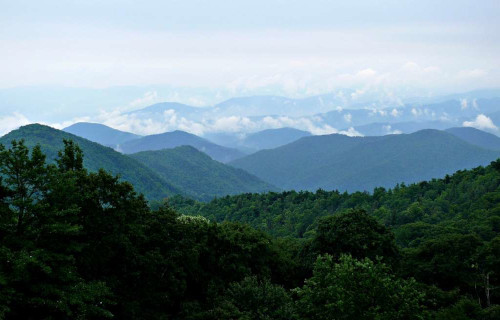
Appalachian Mountains Physical Description
This truly mind-boggling formation almost immediately captivates those who encounter it for the first time. Yet it does so for a combination of reasons. That holds true since it’s not only possessed of great beauty, the site also boasts extraordinary truly dimensions.
Most experts divide the magnificent range into three clear subdivisions. Each section holds both features similar to the others, as well as some distinct to itself. This allows for at least some context when discussing its qualities, given the vast scale of its massive size.
The northern section roughly begins in the province of Newfoundland and Labrador, in Canada. From there, though, it extends itself to the Hudson River. Within this greater extent, however, numerous features stand out in terms of their impressive physical stature.
In the Canadian portion of this section, multiple peaks exceed 4,000 ft (1,219 m) in height. Many others also reach at least 2,700 ft (823 m). In its southern parts, however, several reach or exceed elevations of 5,000 ft (1,524 m). One attains a height of 6,288 ft (1,917 m).
Meanwhile, the central section of the range roughly reaches from the Hudson River to West Virginia. This stretch contains its own wonders. These include the stunning New River. Yet ot also obasts other marvels to delight the eye of the fortunate visitor or resident.
Subsections of the greater range exist here, including the Allegheny Plateau and the Taconic Mountains. The impressive Great Appalachian Valley, itself a wonder of Nature, also appears here. The stunning Blue Ridge Mountains, another amazing subset, also begin here.
The southern section of the Appalachian Mountains completes its length. This portion reaches from the New River in Pennsylvania, to northern Alabama. Along its course, though, yet more marvels await, including many other mountains of 2,700 ft (823 m) or more.
It also holds some of the greatest natural wonders. The magnificent Mt. Mitchell lies within this region of the range. The highest point east of the Mississippi, it reaches 6,684 ft (2,037 m). Others include such features as Linville Falls and Sliding Rock, both in North Carolina.
Appalachian Mountains Location, Formation, and Ecology
The awe-inspiring Appalachian Mountains formed in a region of the globe already renowned for its abundance of geological wonders. The location of that area won’t surprise many, though. That’s because it formed in a portion of the continent of North America.
Though one end lies in Canada, the majority of its expanse runs through the United States. It further resides in the approximate eastern section of the continent. Within the United States, it extends from Maine in the north, to the northern part of the state of Alabama.
The origins of this marvelous work of geological forces actually lie far back in the earth’s distant past. That’s true since this mountain range began its formation over 1 billion years ago. That makes this amazing natural site one of the oldest such in the entire world.
Its birth originally, and primarily, occurred due to the collision of tectonic plates. Volcanic activity subsequently followed, though much later. The majority of that occurred around 200 million years ago. Evidence places the last eruption at over 50 million years ago.
The Appalachian Mountains further boast a strongly thriving ecology. In fact, the range is considered by most, experts and enthusiasts alike to stand as one of the most biodiverse regions on the entire continent. Species of all kinds thus abound within its confines.
Much of its extent still holds an extensive cover of forested regions. These contain a variety of tree types, of course. Deciduous and evergreen species alike proliferate in abundance. Countless other plants also appear, including the Flame Azalea, which lives nowhere else.
Innumerable animals and insects thus also appear here. Mammals of all sizes, from squirrels to deer and black bear thrive in the region. Birds of all kinds additionally spend their lives here. Reptiles present include the dangerous Eastern Diamondback Rattlesnake.
New River
New River Facts
- Completing this collection of these 4 Geological Wonders of Virginia we give you the flowing beauty that bears the name of the New River.
- This wonder of Nature, rather intriguingly, actually bears a potentially deceptive name. That’s due to the presence of a certain amount of controversy surrounding its exact age. Some, but not all, geologists consider it one of the oldest rivers on earth.
- Regardless of its status in that regard, however, this amazing work of geological forces still stands out from many similar features in the region. The body of water has long served as an important corridor for the spreading of flora and fauna through the region.
- Several portions of its length now hold man-made dams, for hydroelectricity generation. Some of the surrounding ridges, however, also serve as home to uncommon plants. Thankfully, great care has therefore been taken to preserve these native species.
- Local Native American tribes new of its presence for centuries prior to the arrival of European settlers, of course. The first recorded sighting of it by outsiders occurred in 1671. At that time, members of a fur trading expedition found and explored parts of it.
- Today, local residents greatly enjoy and appreciate its natural beauty. This further takes many forms. These frequently include such activities as kayaking and rafting. Numerous large, open ledges also dot its length, allowing for the creation of fabulous viewing sites.
- The origins of the name New River itself remain undetermined with complete certainty. One theory purports that it derives from a word in the language of the local tribes that means new waters. Several other theories, however, propose other origins.
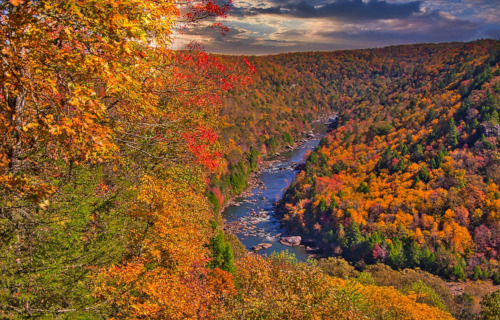
New River Physical Description
While it’s certainly not the longest river in the world, the New River nevertheless boasts a length that’s quite respectable. Although it takes a somewhat winding course, the overall length of this flow of water measures out to approximately 360 mi (580 km).
It also stands out for another reason. The direction of its flow further distinguishes it from the many other rivers in its part of the world. That’s because it’s believed to be the only major river in the country in which it appears to primarily flow in a northward direction.
Along its wending course, the New River also cuts its way through numerous gorges. Some of these have an impressive depth, with the local walls rising as much as 1,500 ft (457.2 m) above the surface of the water. It also boast numerous areas of powerful rapids.
Its depth varies, in some cases extremely. Along most of its course, the depth varies, reaching as much as 100 ft (30.5 m). In a few sections, this dwindles to no more than a few inches! In areas other than around the rapids, the river typically has a slow, gentle flow.
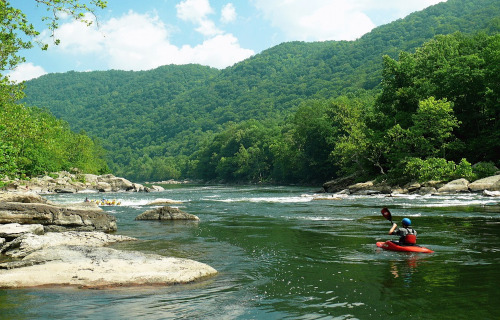
New River Location, Formation, and Ecology
The controversially-named New River formed in a region of the world well known for its scenic beauty. This region consists of a long-settled portion of North America. More precisely, the natural marvel formed in the southeast portion of the United States.
There, this remarkable flow of water further finds its presence restricted to just 3 states. These fortunate states consist of North Carolina, Virginia, and West Virginia. Coincidentally, the meandering path it takes flows through far corners of all three of these states.
This wonder originates in a portion of the Blue Ridge Mountains in northwestern North Carolina, themselves part of the Appalachian Mountains. The spot from which it flows, the headwaters, in fact, lies only a short distance from the popular resort town of Boone.
Varying estimates place its time of origin to between 10 and 360 million years ago. During this time, the ancient Appalachian Mountains continued their slow yet inexorable push upward. This gradually altered the direction of its flow, and shortened its length.
The amazing New River also flows through the heart of the largest block of relatively unfragmented, mid-latitude forest still remaining in the world. This serves as home to countless plant varieties, including dozens of different species of trees, largely hardwoods.
Even more impressively, its banks provide a home to a relatively large abundance of flora, both in numbers of species, and sheer volume. This includes many uncommon forms of cedars, pines, and sedges. Some of these, in fact, appear nowhere else on earth.
Equally impressive, however, is the fact that fauna abounds in the region, partly thanks to its presence. Many evolved as endemic, while others migrate along its banks. At least 65 species of mammals live in the region, along with nearly 40 species of reptiles.
The waters of the New River also boast at least seven varieties of fish, with an abundant population. Some of these also appear nowhere else on earth. Many types of insects and birds, migratory and otherwise, appear in the region, including the majestic Bald Eagle.
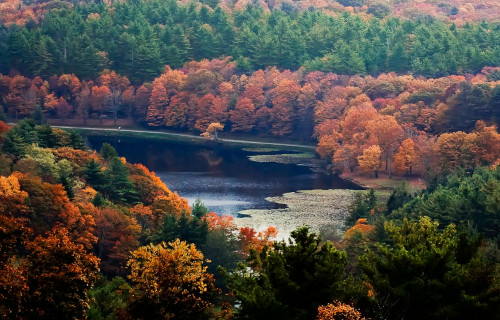
4 Geological Wonders of Virginia
We hope that each of you enjoyed reading, and hopefully learning from, this article we’ve written about these 4 Geological Wonders of Virginia. It’s also our hope that doing so has left you with either a new or renewed appreciation for such wonders of Nature.
Unfortunately, many other such features around the world now find themselves facing threats to their continued existence in an undamaged state. Many of those dangers, in fact, stem from the actions of mankind. We must do all we can to protect and preserve them all.
Check out our articles on 5 Remarkable United States Reptiles, Incredible Sharks of the World, 4 Supremely Stunning Squirrels, Sensational Spiders Around the World
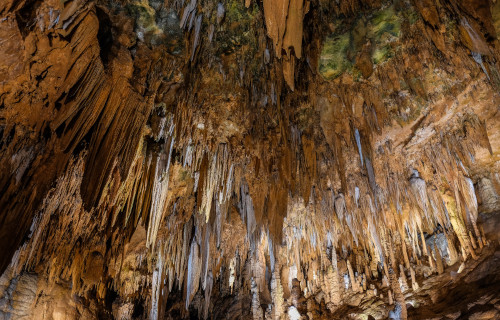
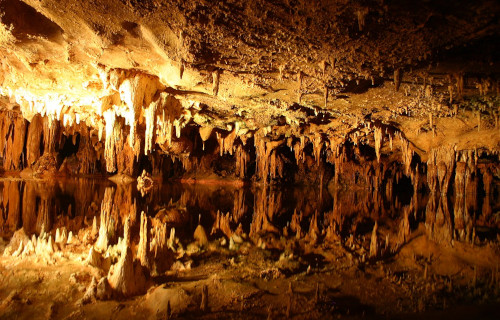
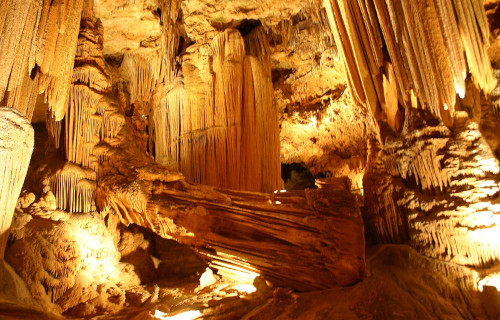

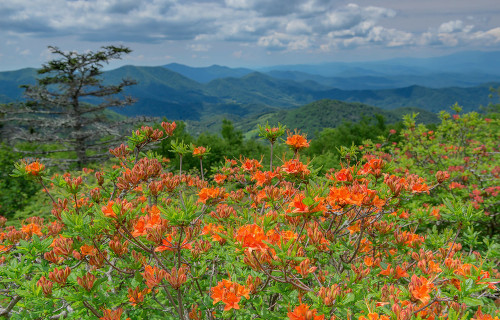

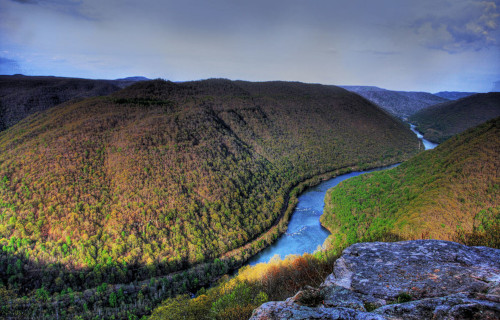









Leave a Reply